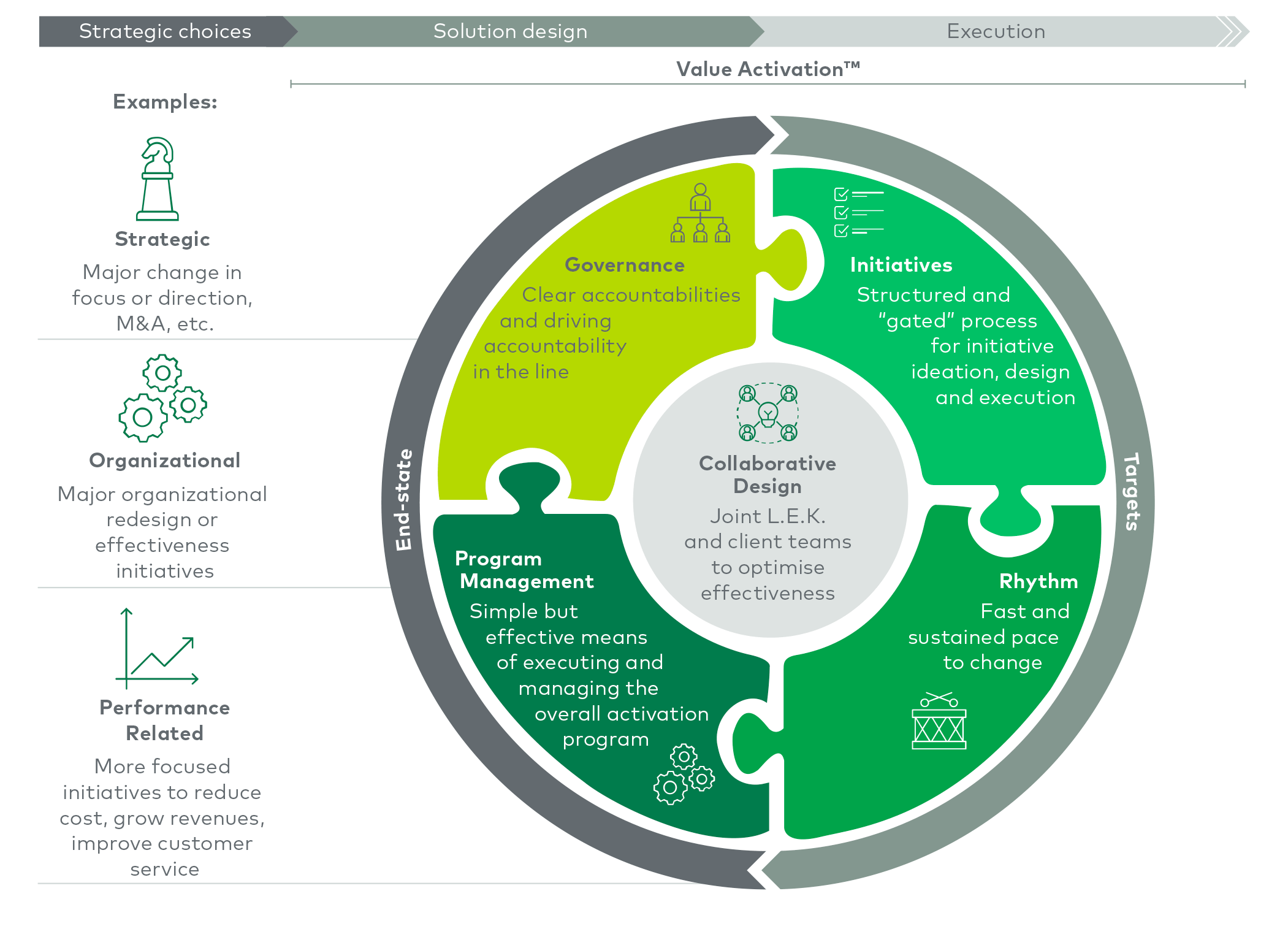Value Activation
Value activation in action
It’s the moment when the rubber meets the road: you have made the strategic choices, or refreshed your operating model, or set ambitious performance improvement targets. It is time for action, but regardless of the choices you’ve made, it all comes down to the critical question of how best to activate change? Frankly, what is the best way to “get stuff done”?
We see clients confront this dilemma almost every day. Our journey with clients encompasses hard-fought wins and painful mishaps, and through these experiences we have developed a structured and disciplined approach to Value Activation.
“Getting stuff done” is hard. It often means working against the inertia of an organization that has stalled. It requires a series of balancing acts: between an inspiring end-state and challenging targets; between central coordination and democratization of the change; between creativity and discipline; between detailed planning and agile response. It must also balance pressure for results with collaborative design for lasting capability and change.
L.E.K.’s Value Activation approach is based on seven elements. Each element is important in its own right, but the greatest value is realized when they work in concert.
Seven elements to value activation

Key success factors
- End-state. A simple narrative that articulates why change is needed, but importantly also describes how the organization will “look and feel” when change has been successful. Executives need to use the same language consistently and be visible in the activation program.
- Targets. Targets are required to provide focus and to stretch the organization. Targets need to be challenging, aligned and linked to remuneration.
- Governance. A model that provides a clear line of sight from the executive level to the lowest level of the activation program. Executives should have a formal and active role in workstreams, rather than simply sitting in judgment on a steering committee. The real “stars of the show” are at the lowest levels of the governance hierarchy.
- Initiatives. A structured and “gated” process for initiative ideation, design and execution. A larger number of smaller initiatives and initiative owners involved in the program democratizes change throughout an organization and increases the likelihood of sustainable results.
- Rhythm. Compulsory weekly review sessions, where workstreams and initiative owners speak to their efforts and challenges. This rhythm must be sustained over a prolonged period – true change takes time and repetition. Executives attend these weekly reviews – as both part of the activation office and also as workstream owners where they are subject to full scrutiny.
- Program management. An activation office is critical to create the end-to-end transparency necessary to coordinate the overall activation program. It must provide “one source of truth” in terms of priorities and progress. The activation office should function as a force for simplicity (e.g., consistent toolset adopted across the program).
- Collaborative design. Executives and initiative owners will push back against change that is imposed on them, but will embrace change that they can contribute to structuring. Collaborative design, supported by selective coaching, can ensure high-quality output, drive momentum and enable sustainable results by building capabilities deep into the organization.
Achieving a balance across these critical elements is at the core of our Value Activation method. Every activation program will have its nuance. But our experience is that all the elements of our approach remain relevant and can be applied with proper appreciation of the circumstances to get things done in all kinds of companies with all manner of activation challenges. And when all these elements work together in concert, it provides the best foundation for enabling enduring change.








